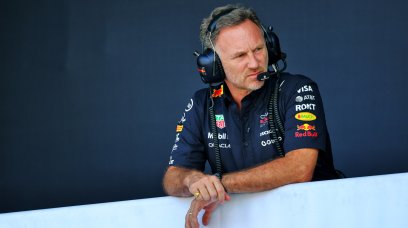What exactly is a crash test? In order to ensure safety standards are kept high in Formula 1, teams must subject their chassis to a crash test every year.
If a team fails the test, the chassis is not allowed to participate in races. A chassis is tested at both front impact, rear impact and also for safety at side impacts. The speed is usually between 36 and 54 kph.
These speeds provide the most accurate results when it comes to how a chassis absorbs the impact.
A driver's so-called survival cell must always remain fully intact, and in the case of a frontal impact at the front, for example, a driver must not be subjected to more than 60G within 0.03 seconds of impact. A total of nearly 20 tests will be carried out.
For Red Bull, the first crash test for the new car reportedly went wrong, causing a lot of noise. When Helmut Marko was asked questions about it, the Red Bull Motorsport Advisor responded: "If we had passed the first crash test, that would be precisely a problem. Then we would not have done well!"
Viewed by others:
Warning to the competition?
And there is an important grain of truth in that. Weight is a key factor when passing the crash test. The heavier the car, the better the chassis can absorb the impact.
So if you want to take risks with the weight of your new car, you may fail a crash test once in the quest for better lap times. This has happened several times in the past, without consequences.
It just goes to show once again that Red Bull has not been idle after dominating last term. The team is not yet satisfied after 21 wins and both world titles and is, arguably, taking new risks with the RB20.
Development of the superior RB19 was halted early on, after which the focus went to 2024. The rumours surrounding the "failed" crash test show that Red Bull is again pushing the limits within current regulations and is hungry to beat the competition again this season.
Of course, Red Bull is going to pass a crash test before the new season, so it is not out of the question that the competition is watching developments with suspicion.
Standing still is going backwards in Formula 1 and within the current ground effect regulations it is more difficult to develop the car. Perhaps risks have to be taken.
We are, of course, only going to actually see what Red Bull has come up with and designed during the Bahrain Grand Prix. In any case, current developments are creating a lot of curiosity. Is the RB20 a new rocket, or will we get to see fierce competition? Time will tell.
Don't miss out on any of the Formula 1 action thanks to this handy 2026 F1 calendar that can be easily loaded into your smartphone or PC.
Download the calenderMost read
In this article











Join the conversation!